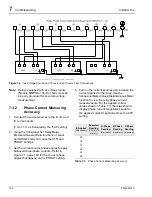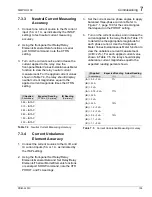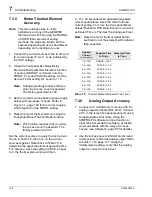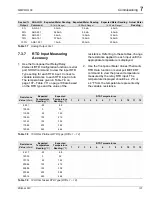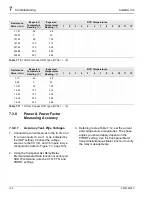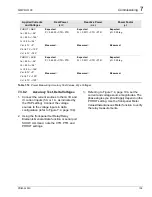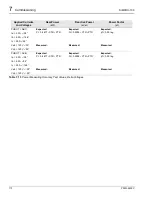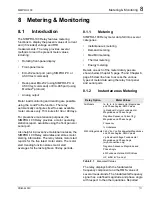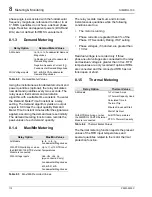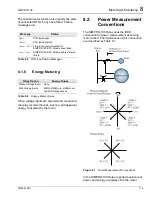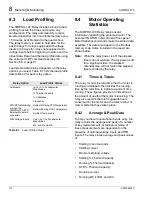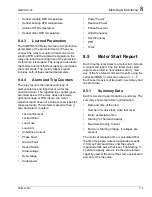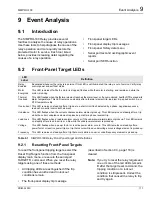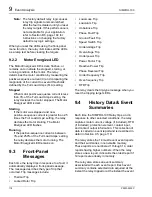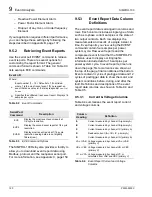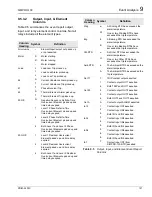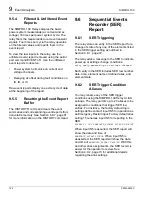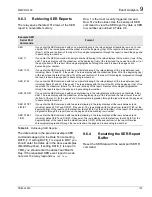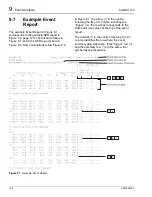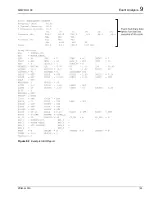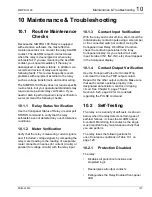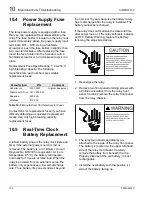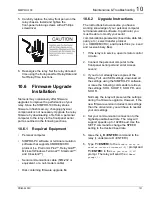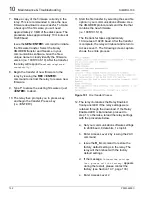
9
Event Analysis
SIMPRO-100
118
PRIM-2400C
Note:
The factory default relay logic causes
relay trip signals to remain latched
after the fault is cleared until you reset
the relay targets. If this performance is
not acceptable for your application,
refer to Section B.5, page 144 for
instructions on changing the factory
default relay logic settings.
When you reset the LEDs using the front-panel
menu function, the relay illuminates all the LEDs
as a lamp test before clearing the targets.
9.2.2
Motor Energized LED
The Motor Energized LED is dark, flashes, or
remains on to indicate the stopped, starting, or
running condition of the motor. The relay
determines the motor condition by measuring the
positive-sequence current (I
1
) and comparing the
magnitude of the current to several thresholds
defined by the Full Load Amps (FLA) setting.
Stopped
When motor positive-sequence current is less
than 3% of the Full Load Amps’ setting, the
relay declares the motor stopped. The Motor
Energized LED is dark.
Starting
If the motor was stopped and now
positive-sequence current is greater than 2.5
times the Full Load Amps’ setting, the relay
declares the motor starting. The Motor
Energized LED flashes.
Running
If the positive-sequence current is between
3% and 250% of the Full Load Amps’ setting,
the relay declares the motor running. The
Motor Energized LED remains on.
9.3
Front-Panel
Messages
Each time the relay trips in response to a fault, it
automatically displays a front-panel message.
The message describes the type of trip that
occurred. Trip messages include:
•
Thermal Trip
•
Locked Rotor Trip
•
Load-Loss Trip
•
Load-Jam Trip
•
Unbalance Trip
•
Phase Fault Trip
•
Ground Fault Trip
•
Speed Switch Trip
•
Undervoltage Trip
•
Overvoltage Trip
•
Underpower Trip
•
Power Factor Trip
•
Reactive Power Trip
•
Phase Reversal Trip
•
Under-frequency Trip
•
Over-frequency Trip
•
RTD Trip
The relay clears the trip-type message when you
reset the tripping target LEDs.
9.4
History Data & Event
Summaries
Each time the SIMPRO-100 Relay trips, and in
response to other selected conditions, the relay
captures motor current, voltage (if included), RTD
(if included), protection element, contact input,
and contact output information. This collection of
data is called an event report and is described in
detail in Section 9.5, page 119.
The relay stores the 14 most recent event reports
and their summaries in nonvolatile memory.
These reports are numbered 1 through 14, older
reports having higher numbers. When the relay
stores a new report, it discards the oldest report if
14 reports are already in memory.
The relay also stores an event summary
associated with each event report. Each event
summary contains selected data acquired at the
instant the relay tripped or at the instant the event
Summary of Contents for SIMPRO-100
Page 1: ...SIMPRO 100 Motor Protection Relay Instruction Manual Document No PRIM 2400C ...
Page 12: ...Contents SIMPRO 100 x PRIM 2400C ...
Page 16: ...Contents SIMPRO 100 xiv PRIM 2400C ...
Page 42: ...3 SIMPRO PC Software SIMPRO 100 40 PRIM 2400C ...
Page 100: ...6 ASCII Serial Port Operation SIMPRO 100 98 PRIM 2400C ...
Page 127: ...SIMPRO 100 Event Analysis 9 PRIM 2400C 125 Figure 9 2 Example SER Report ...
Page 136: ...10 Maintenance Troubleshooting SIMPRO 100 134 PRIM 2400C ...
Page 138: ...A Firmware Versions SIMPRO 100 136 PRIM 2400C ...
Page 206: ...D SIMPRO PC Compatibility Features SIMPRO 100 204 PRIM 2400C ...
Page 214: ...E Motor Thermal Element SIMPRO 100 212 PRIM 2400C ...
Page 230: ...F SIMPRO 100 Relay Settings Sheets SIMPRO 100 228 PRIM 2400C ...
Page 239: ......

